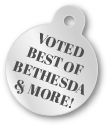To Buy Ivermectin Online Visit Our Pharmacy ↓
 Controversies Surrounding Ivermectin: Politics and Science
Controversies Surrounding Ivermectin: Politics and Science
From Lab Hype to Late-night Political Theater
Lab reports of antiviral activity sparked hopeful headlines, often citing petri-dish results that didn't translate to clinical benefit. Teh early buzz ignored dose differences, study quality, and biological nuance, yet provided a simple storyline for readers hungry for answers.
Television and political stages turned the story into theatre: opponents and proponents amplified small studies, personal anecdotes, and speculative claims. That theatrical frame obscured uncertainty, made nuance unfashionable, and left scientists scrambling to correct misinterpretations.
Policy debates moved faster than evidence, shaping guidelines, prescriptions, and courtroom fights while trust in public health Occured among some communities. The episode shows how rough science communication and performative politics can distort risk perception, and it argues for clearer messaging, better trials, and responsible media coverage.
| Phase | Effect Summary |
|---|---|
| Lab | Preclinical laboratory hype |
| Media | Amplify personal anecdotes |
| Politics | Polarize policy debate |
| Outcome | Eroded public trust |
Conflicting Studies, Mixed Messages, Media Frenzy

Research on ivermectin became a rollercoaster: early lab results hinted at promise, then small trials clashed with larger, better-controlled studies. Journal retractions, preprints, and nuance were lost in headlines, leaving clinicians and the public to parse contradictory claims while trust frayed.
Teh cacophony of soundbites, op-eds, and social posts amplified every study’s weakness; reviewers and regulators moved at different paces. Consumers demanded clear answers, but science evolved slowly, Occassionally producing revised recommendations and messy policy debates that blurred evidence and politics. Clinicians struggled to advise patients amid ongoing public confusion.
Misinformation Networks Fueling Public Health Distrust
A viral post from a fringe clinician promised miracles, then cascaded into chat groups and partisan outlets, turning a complex science story into a cultural battleground. Claims about ivermectin morphed from preliminary lab signals into definitive cures, amplified by algorithms that favor outrage over nuance.
Networks of influencers, memetic videos, and politicized punditry erode trust in health institutions, creating a feedback loop where doubts are weaponized. Regulators and clinicians struggle to counteract false narratives while preserving speech, a situation the Goverment must act on with clearer communication and community engagement.
Regulatory Battles: Doctors, Agencies, and Liability

Regulatory clashes have played out like courtroom dramas, with doctors weighing patient advocacy against professional discipline. Teh frontline clinician may face license reviews, malpractice suits, or public censure after prescribing ivermectin off-label, while state medical boards issue emergency guidance that shifts by week. Agencies balance evolving evidence, legal constraints, and public pressure, creating an uncertain landscape for care and accountability.
Hospitals and health systems scramble to update protocols as lawyers argue liability and politicians demand action; some courts have enjoined restrictions, others upheld sanctions. This tug-of-war exposed gaps in consent, reporting, and supply chains, prompting calls for clearer standards, better data sharing, and a more coherent approach so practitioners can both innovate and protect patients without fear of arbitrary penalties. Insurers, indemnity funds, and licensing boards now debate thresholds for discipline and when emergency use should trigger immunity and transparency.
Off-label Use, Prescriptions, and Legal Gray Areas
Clinics became unexpected stages as people pushed for ivermectin, convinced by anecdotes and forums. Physicians described a fraught nightly balancing act between patient autonomy and evidence. Some wrote prescriptions to calm fears; others refused, citing safety. The scene felt less like medicine and more like a cultural skirmish.
Regulators and hospitals scrambled to interpret laws, leaving doctors exposed to liability and uncertain discipline. Insurance, malpractice threats, and local policies created a patchwork, where access depended on geography not science. Patients chasing quick fixes could Recieve drugs in clinics or via online scripts, complicating oversight.
The muddle calls for clear guidance, legal clarity, and better communication.
| Stakeholder | Concern | Priority | Notes |
|---|---|---|---|
| Doctors | liability and unclear standards | guidance needed | |
| Patients | access and safety worries | require education | |
| Regulators | inconsistent enforcement prompts | policy reform and clarification | |
| Industry | misinformation spread | monitoring and research | funding oversight collaboration |
Lessons Learned: Science Communication and Policy Reform
An honest narrative helps: early lab signals ignited hope, then spin turned science into spectacle when experts or officials failed to set context. That gap shaped policy debates.
Stakeholders noticed how small studies and press cycles produced mixed messages, creating openings for bad actors and eroding trust. Media outlets often chased novelty rather than nuance.
Reforms must prioritize transparent data, rapid independent review, and sustained science communication training. Occassionally clearer legal frameworks on prescribing and liability would help clinicians act responsibly and patients recieve trustworthy advice. See WHO and NIH

